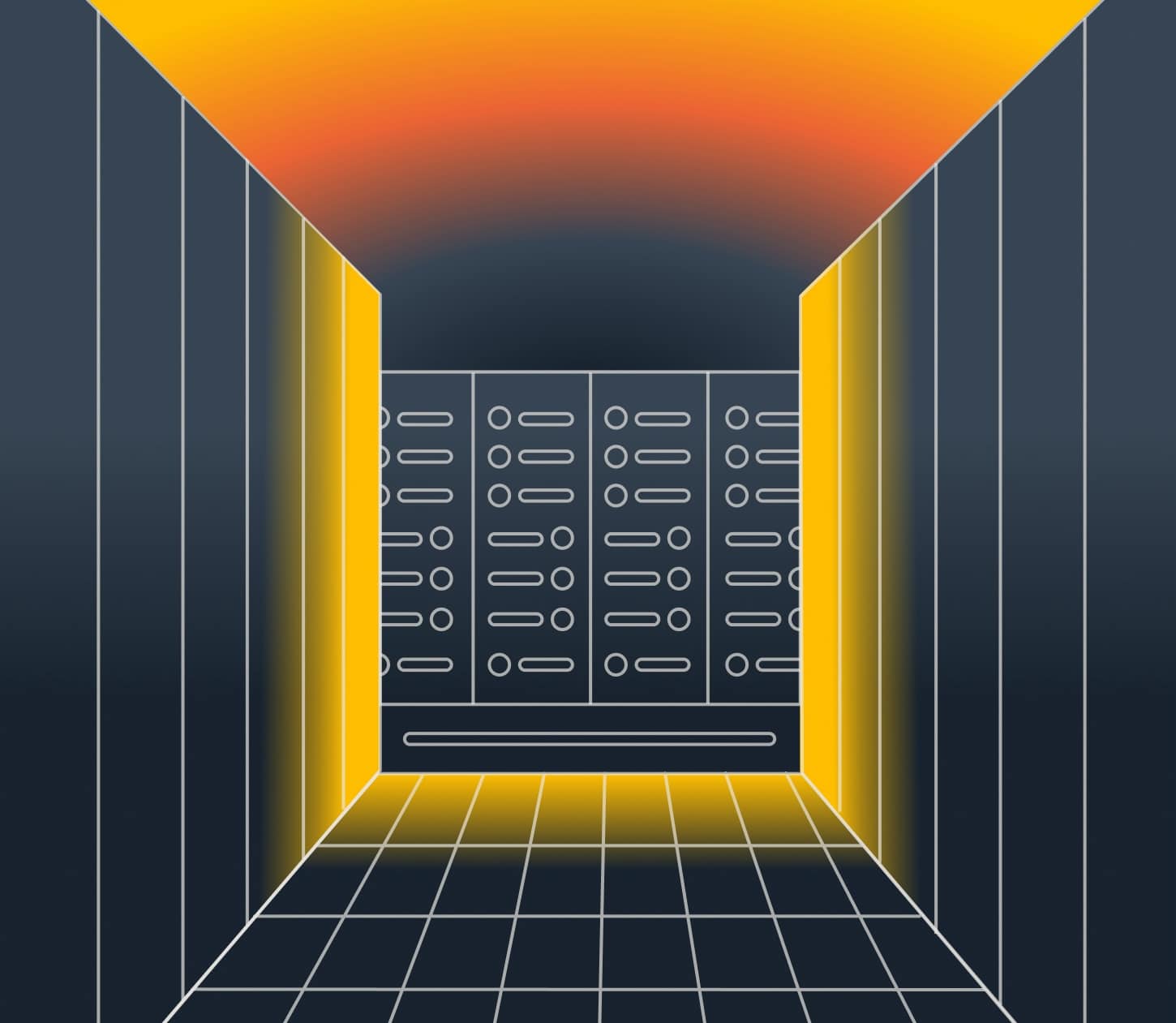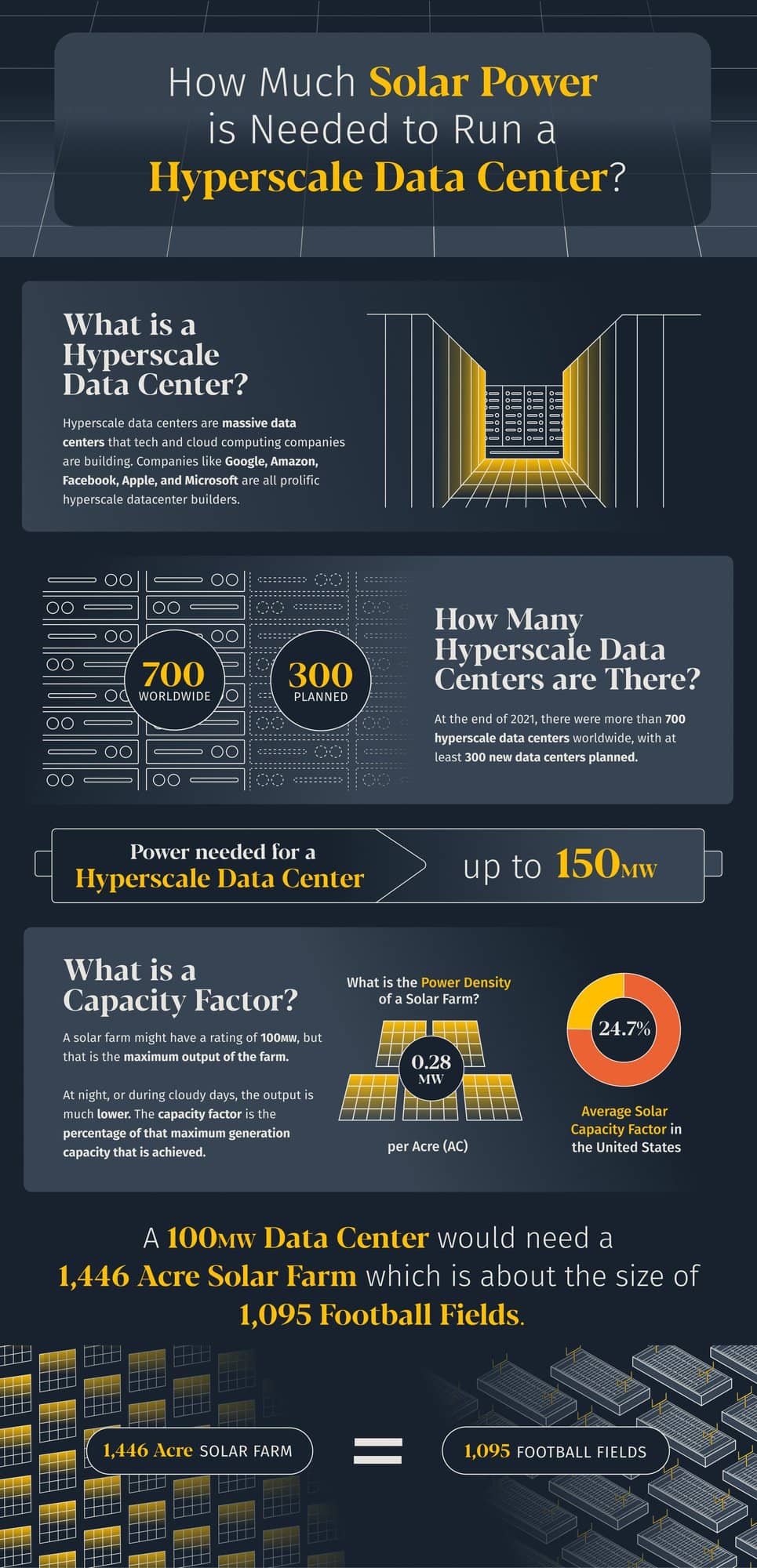
In the rapidly evolving digital age, hyperscale data centers have become the backbone of global tech giants like Google, Amazon, Facebook, Apple, and Microsoft. As of the end of 2021, there are over 700 hyperscale data centers worldwide, with at least 300 more on the horizon. But as these facilities grow in number and size, a critical question arises: How do we power these colossal data hubs sustainably?
The Energy Demands of Hyperscale Data Centers
Hyperscale data centers are not just sprawling in size; they are also voracious in their energy needs. A single hyperscale data center can require up to 150 megawatts (MW) of power – equivalent to the energy consumption of a decent sized city.
Challenges and Realities of Powering Hyperscale Data Centers with Solar Energy
Solar power, with its decreasing costs and increasing efficiency, presents a promising alternative. However, powering a hyperscale data center with solar energy is still a massive challenge. The key lies in understanding the intermittency and capacity factor of solar farms.
For instance, a 100 MW solar farm might sound sufficient, but this figure represents its maximum output (also referred to as its “nameplate capacity”). However solar is an “intermittent” resource, it can’t generate power 24/7. Factors like solar radiance levels, cloudy weather, or snow/dust on the panels will all reduce actual energy production. The percent of its max capacity that is actually generated over time is known as the capacity factor. In the United States the average is 24.7% for utility-scale solar installations.
The Scale of Solar Solutions
Because of the 24.7% capacity factor, you’d need 1,446 acres of solar panels to provide enough power for a 100 MW data center. However, you’d also need to store a lot of that power so that the datacenter could run at night, or when the sun is down. Right now, that much battery storage would be cost prohibitive, but it might not be in the coming years. If that was the case, you could use batteries to store up the excess solar used during the day, and use it at night to power the data center.

The Road Ahead
As we step into a future where data is the new oil (see what we did there?), the need for sustainable energy solutions becomes imperative. Solar energy, with its vast potential, stands at the forefront of this green revolution. However hyperscale data centers are just about the most power hungry things humans have ever built. Figuring out how to power these monsters with carbon-free energy is going to be a huge challenge.
Transform Your Energy and Utility Strategies with Us
At Simple Thread, we specialize in driving digital transformation in the energy and utility sectors. From innovative product design to advanced data analytics and operational cloud solutions, our team is equipped to meet the unique challenges of modern electric utilities. If you’re ready to embrace a sustainable and digitally advanced future, reach out to us. Let’s discuss how our expertise can help you navigate and excel in your digital transformation journey. We’d love to chat!
Loved the article? Hated it? Didn’t even read it?
We’d love to hear from you.
